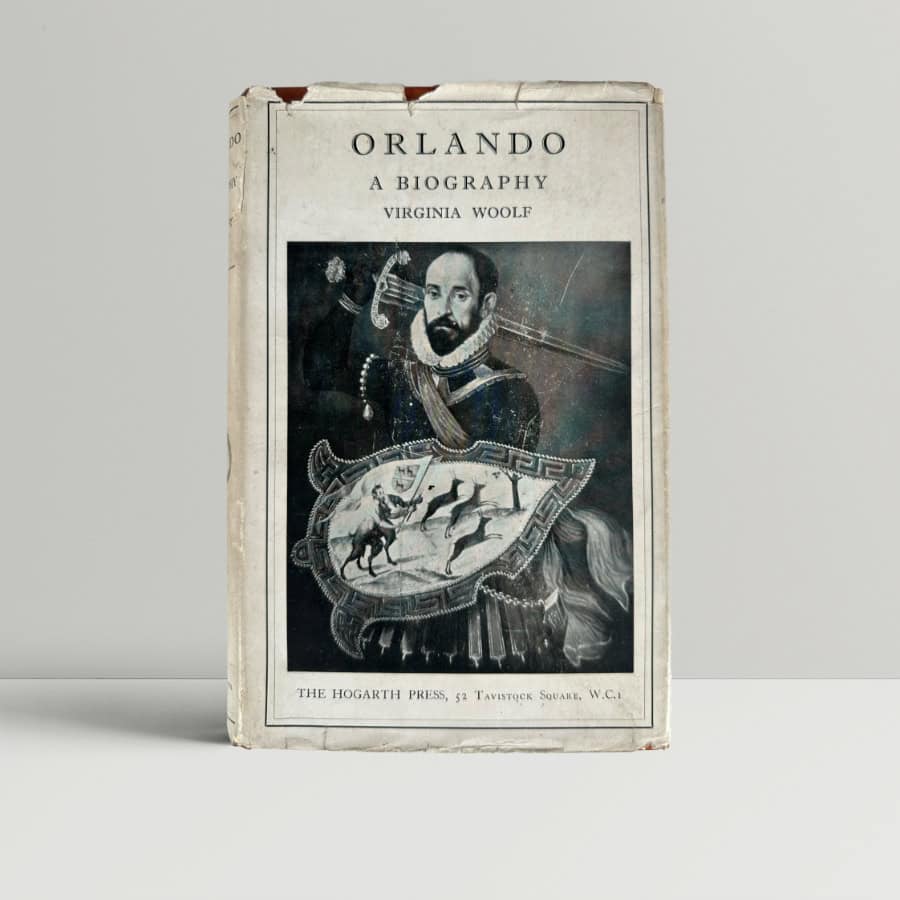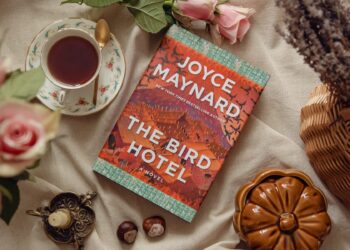Introduction
Summary and Themes of Orlando by Virginia Woolf Virginia Woolf’s “Orlando: A Biography,” published in 1928, is a groundbreaking novel that transcends traditional gender boundaries and explores themes of identity, time, and the fluidity of gender. The narrative follows the life of Orlando, a nobleman in Elizabethan England who mysteriously transforms into a woman in the 18th century. This whimsical yet profound tale offers a unique perspective on the roles and expectations of gender throughout history, reflecting Woolf’s modernist sensibilities and her interest in the complexities of identity.
Summary
1. The Beginning of Orlando’s Life
The novel opens with the introduction of Orlando, a young nobleman born in the late 16th century. He is described as a beautiful and ambitious boy, favored by Queen Elizabeth I, who becomes infatuated with his charm. Orlando’s life is marked by his desire for artistic expression and a longing for love, which leads him to pursue various relationships with women. His early years are filled with grand adventures and literary aspirations, highlighting the cultural richness of the Elizabethan era.
READ MORE
2. Orlando’s Transformation
Summary and Themes of Orlando by Virginia Woolf As the story progresses, Orlando embarks on a journey to the East, where he seeks inspiration and meaning in his life. After a period of profound introspection and exploration, Orlando falls into a deep sleep. Upon awakening, he discovers that he has transformed into a woman. This radical shift serves as the novel’s turning point, prompting Orlando to navigate a world that now views her through the lens of femininity.

3. Life as a Woman
Orlando’s new identity brings about a range of challenges and experiences that reflect the societal expectations of women in the 18th century. Woolf poignantly depicts Orlando’s struggles with the limitations placed on women, contrasting her previous life as a man with her new existence. She experiences love, desire, and frustration in her relationships, particularly with men, who often fail to understand her complexity as an individual.Summary and Themes of Orlando by Virginia Woolf
4. The Exploration of Gender Identity
Summary and Themes of Orlando by Virginia Woolf Throughout the novel, Woolf examines the concept of gender as a social construct. Orlando’s transformation allows her to experience life from both masculine and feminine perspectives, leading to a deeper understanding of identity. Woolf skillfully uses this duality to critique the rigid gender roles of her time, emphasizing the fluidity of gender and the ways it influences personal identity and societal expectations.
READ MORE
5. Time and Historical Context
Summary and Themes of Orlando by Virginia Woolf Another significant theme in “Orlando” is the passage of time. Woolf plays with the notion of history, portraying Orlando’s life across several centuries—from the Elizabethan era to the 20th century. The novel’s structure defies chronological order, allowing Woolf to highlight the continuity and change in culture, art, and gender norms. Orlando’s life becomes a tapestry of historical moments, emphasizing the cyclical nature of time and the interconnectedness of human experiences.Summary and Themes of Orlando by Virginia Woolf
6. Art and Creation
Orlando’s journey is also a quest for artistic fulfillment. Throughout the narrative, she grapples with the nature of creativity and the role of the artist. Woolf explores the idea that art transcends gender, suggesting that true artistic expression is rooted in authenticity and the freedom to explore one’s identity. Orlando’s experiences as both a man and a woman inform her writing, culminating in her eventual success as a published author.Summary and Themes of Orlando by Virginia Woolf
7. Love and Relationships
Summary and Themes of Orlando by Virginia Woolf Woolf delves into Orlando’s romantic relationships, which serve as reflections of her evolving understanding of love and desire. Her experiences with various partners—both male and female—highlight the complexities of attraction and emotional connection. Woolf’s portrayal of love challenges traditional notions, emphasizing the importance of understanding and empathy in relationships.
8. The Influence of Society
Orlando’s life is shaped by the societal norms of her time, which dictate behavior, aspirations, and opportunities based on gender. Woolf critiques these constraints, illustrating how they limit personal freedom and self-expression. As Orlando navigates her existence, she becomes increasingly aware of the ways in which society influences her identity and choices.Summary and Themes of Orlando by Virginia Woolf

9. The Ending and Modernity
Summary and Themes of Orlando by Virginia Woolf In the final chapters, Orlando emerges in the early 20th century, embodying the modern spirit. She reflects on her long life, which spans over three hundred years, and contemplates the changes she has witnessed. The novel concludes with a sense of optimism, as Orlando embraces her multifaceted identity and the possibilities of the future. Woolf’s ending signifies a break from traditional narratives, celebrating individuality and the richness of human experience.
10. Woolf’s Style and Techniques
Woolf’s narrative style in “Orlando” is characterized by its lyrical prose, playful tone, and rich imagery. The use of direct address, humor, and a blend of genres—biography, fantasy, and satire—creates a unique reading experience. Woolf’s innovative approach reflects her modernist ideals, challenging readers to rethink their perceptions of gender, identity, and the passage of time.
READ MORE
Themes
- Fluidity of Gender: The transformation of Orlando highlights the complexities of gender identity and the notion that gender is not fixed but rather a fluid construct shaped by societal expectations.
- Time and History: Woolf explores the passage of time and its impact on identity, culture, and art. The non-linear narrative reflects the interconnectedness of historical moments and personal experiences.Summary and Themes of Orlando by Virginia Woolf
- Artistic Expression: The novel emphasizes the importance of creativity and the artist’s role in society. Orlando’s journey as a writer underscores the idea that true artistic expression transcends gender.
- Love and Relationships: Woolf examines the nature of love, desire, and emotional connection, challenging traditional notions of romance and highlighting the complexities of human relationships.
- Societal Constraints: The narrative critiques the limitations imposed by societal norms, illustrating how they shape individual identity and restrict personal freedom.Summary and Themes of Orlando by Virginia Woolf
- Identity and Self-Discovery: Orlando’s journey is ultimately one of self-discovery, as she navigates the intricacies of her identity and embraces the multifaceted nature of her existence.
Conclusion
Summary and Themes of Orlando by Virginia Woolf Virginia Woolf’s “Orlando” is a revolutionary exploration of identity, gender, and the passage of time. Through the life of its protagonist, Woolf challenges traditional notions of gender and highlights the fluidity of identity in a rapidly changing world. The novel’s playful yet profound narrative invites readers to reflect on their understanding of self and the complexities of human experience. Woolf’s masterful prose and innovative storytelling continue to resonate, making “Orlando” a seminal work in modern literature.
FAQ
1. What is the main theme of “Orlando”?
The main theme is the fluidity of gender identity, exploring how gender is a social construct influenced by societal norms and expectations.
2. How does Orlando’s transformation impact the narrative?
Orlando’s transformation from a man to a woman allows for a rich exploration of gender roles and experiences, highlighting the complexities of identity.
3. What is the significance of the passage of time in the novel?
Woolf uses the passage of time to explore historical changes in culture, art, and gender norms, emphasizing the interconnectedness of human experiences across centuries.
4. How does Woolf portray love and relationships in “Orlando”?
Woolf examines love and desire through Orlando’s various relationships, highlighting the complexities of attraction and emotional connection beyond traditional romantic notions.
5. What role does artistic expression play in Orlando’s life?
Artistic expression is central to Orlando’s journey, as she navigates her identity as a writer, illustrating that creativity transcends gender.
6. How does Woolf’s writing style contribute to the story?
Woolf’s lyrical prose, playful tone, and innovative narrative techniques create a unique reading experience, challenging readers to rethink their perceptions of gender and identity.
7. What societal constraints does Orlando face?
Orlando encounters limitations imposed by societal norms regarding gender, which shape her identity and choices throughout her life.
8. How does the novel end?
The novel concludes with Orlando embracing her multifaceted identity in the early 20th century, signifying a break from traditional narratives and celebrating individuality.
9. What is the significance of the title “Orlando”?
The title reflects the protagonist’s journey through life, highlighting the fluidity of identity and the exploration of gender beyond conventional boundaries.
10. How does “Orlando” relate to modernist literature?
“Orlando” exemplifies modernist themes by challenging established conventions, exploring the complexities of identity, and experimenting with narrative form and style.
READ MORE

















